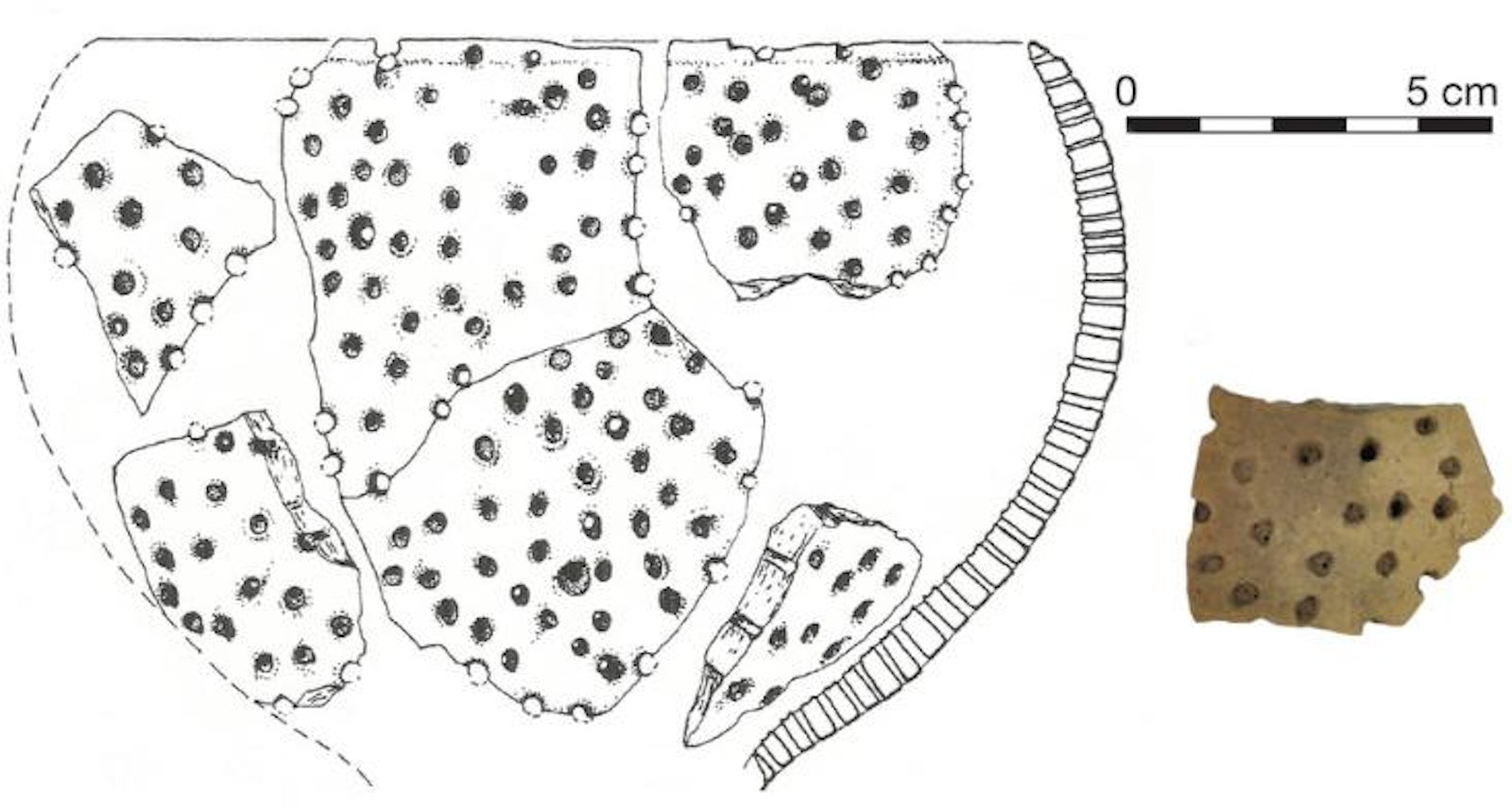
Perforated pottery shards sat alongside cattle bones at the Polish dig site. There archaeologists collected fragments from bowls, cooking pots, and flasks and brought them back to the United Kingdom. At his lab at the University of Bristol, Richard Evershed discovered something on the unglazed clay: the oldest evidence of milk-fat residues on the continent. The farmers, some of the first in Europe, had been making cheese at the site roughly 7,500 years ago. Other studies show that farmers in the Middle East began making cheese even earlier—maybe 2,000 years earlier, soon after animals were first domesticated.
These recent discoveries have lent support to the idea that cheese was a key part of the diet of early farmers, especially as they spread out from the warm, fertile areas where agriculture first emerged. “Cheese was a part of the diet, and an important component of the diet, and it might have been more difficult for farmers to spread to northern Europe without it,” says Mark Thomas, an evolutionary geneticist at the University College London. “The introduction of dairying was a critical step in early agriculture,” reported the team from the Polish dig, “with milk products being rapidly adopted as a major component of the diets of prehistoric farmers and pottery-using late hunter-gatherers.”
At the time of that early cheese-making, almost every adult human in the world was intolerant of lactose, the main sugar in milk—even including the cheese-makers. If those shepherds drank milk from their herds, it would likely make them sick, sometimes violently. Cheese offered a way to get nutrition from dairy in a form that contained much less lactose, so it was easier to digest. In the process of making cheese, farmers separated curds from the watery whey; the curds were made into cheese, the lactose went away with the whey. Cheese also took up less space and kept longer than milk, so farmers could take it with them when they were on the move, sometimes putting it underneath saddles as they traveled. “Cheese is important because it allows you to store the protein for a long period of time,” says Matthew Collins, a bioarchaeologist at the University of York. Some farmers migrated northwest from the Middle East, looking for new pastureland, and they brought their agricultural practices with them as they spread into Europe. They planted grains, milked their cows, and made yogurt and cheese similar to today’s cottage cheese.
But then their populations crashed. One possible theory on why is that they exploited and exhausted the soil, so they moved further north. Their crops, adapted to warmer climates, failed in the cooler, darker environments. The hungry farmers ate all the cheese, then the yogurt, before it had fermented enough to become cheese, and then they drank their milk before it could even become yogurt. Thomas calls this increasingly desperate sequence “eating up the fermentation ladder.”
“If you’re normally supplied, then fine, you’re just eating the stuff”—cheese—“that’s got low lactose,” he says. But milk was not a viable replacement: When people are malnourished, drinking milk and then getting diarrhea can be fatal.
Around the same time, roughly 7,500 years ago, says Thomas, a genetic mutation arose in the European population. This mutation brought lactase persistence, making it easier for people to consume and digest milk. (All babies and young children make lactase, an enzyme that breaks down lactose, but production of lactase traditionally tails off within the first decade of life.) The mutation spread fast, suggesting that being able to drink milk conferred a big genetic advantage. Lactase-persistence genes also emerged separately in other parts of the world around the same time. Within several thousand years, it had become widespread in much of Europe, South Asia, and some parts of Africa and Asia where people herded animals for thousands of years.
Why lactase persistence became so common is still not fully known. “Eating up the fermentation ladder” might be one reason; in lean times, when there wasn’t enough grain to support the population, people could drink milk to get their necessary nutrition. But there are many other hypotheses, and researchers hope be able to winnow the choice down in the next few years. “At some point it became very important to drink raw milk, but we don’t yet know when and why,” says Collins, who is working with an interdisciplinary team on the topic.
For now, it’s hard to say exactly why humans started acting like perpetual babies and drinking milk well into their adulthood. But even for many people who can’t comfortably stomach milk, there are more than 5,000 ways to enjoy a lower-lactose dairy product, ranging from the creamiest Brie to the hardest Parmesan to the stinkiest Limburger. Not only are these cheeses a modern culinary treat—they also recall a time when rotten blobs of milk were crucial sustenance for a big part of the human population.






























